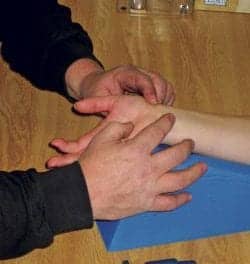Northwestern University scientists have identified the first compound that eliminates the ongoing degeneration of upper motor neurons that become diseased and are a key contributor to ALS (amyotrophic lateral sclerosis). Their study was published recently in Clinical and Translational Medicine.
So far, there has been no drug or treatment for the brain component of ALS, and no drug for HSP and PLS patients.
“Even though the upper motor neurons are responsible for the initiation and modulation of movement, and their degeneration is an early event in ALS, so far there has been no treatment option to improve their health. We have identified the first compound that improves the health of upper motor neurons that become diseased.”
— senior author Hande Ozdinler, associate professor of neurology at Northwestern University Feinberg School of Medicine
Ozdinler collaborated on the research with study author Richard B. Silverman, the Patrick G. Ryan/Aon Professor of Chemistry at Northwestern, according to a media release from Northwestern University.
Study Initiated After Compound ID’d
The study was initiated after Silverman identified a compound, NU-9, developed in his lab for its ability to reduce protein misfolding in critical cell lines. The compound is not toxic and crosses the blood brain barrier.
The NU-9 compound addresses two of the important factors that cause upper motor neurons to become diseased in ALS: protein misfolding and protein clumping inside the cell. Proteins fold in a unique way to function; when they misfold they become toxic to the neuron. Sometimes proteins aggregate inside the cell and cause pathology as in the TDP-43 protein pathology. This happens in about 90% of all ALS patient brains and is one of the most common problems in neurodegeneration.
The research team began to investigate whether NU-9 would be able to help repair upper motor neurons that become diseased due to increased protein misfolding in ALS. The results in mice were positive. Scientists next performed experiments to reveal how and why the diseased upper motor neurons regained their health.
After administering NU-9, both the mitochondria (the cell’s energy producer) and the endoplasmic reticulum (the cell’s protein producer) began to regain their health and integrity, resulting in improved neuron health. The upper motor neurons were more intact, their cell bodies were larger and the dendrites were not riddled with holes. They stopped degenerating so much that the diseased neurons became similar to healthy control neurons after 60 days of NU-9 treatment, the release explains.
Movement Commanders-in-Chief
“Improving the health of brain neurons is important for ALS and other motor neuron diseases.”
— Hande Ozdinler
Upper motor neurons are the brain’s commanders-in-chief of movement. They carry the brain’s input to spinal cord targets to initiate voluntary movement. The degeneration of these neurons impairs the connection from the brain to the spinal cord and leads to paralysis in patients.
Lower motor neurons have direct connections with the muscle, contracting muscle to execute movement. Thus, the lower motor neuron activity is in part controlled by the upper motor neurons.
Ozdinler and colleagues will now complete more detailed toxicology and pharmacokinetic studies prior to initiating a Phase 1 clinical trial. Ozdinler and Silverman are members of the Chemistry of Life Processes Institute at Northwestern, per the release.
[Source(s): Northwestern University, Science Daily]
Related Content:
This Could Help ALS Neurons Mellow Out
Target ALS Funds New ALS Biomarker Studies
Wearable Sensor Aims to Help ALS Patients Communicate




